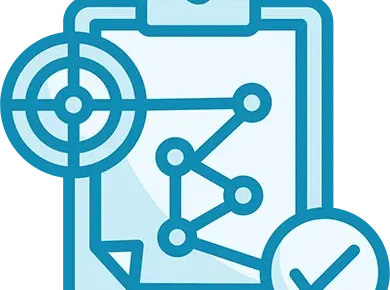Why do we need to do this?
Vacation and Holiday tracking are ways to monitor paid time off accumulated and consumed in those areas. Being an additional benefit to the salary, it is advisable to keep track of them very exactly so that we can benefit from them. For a clear record, a vacation tracker and a holiday tracker can be used.
Who is responsible for the tracking?
Vacation and Holiday tracking are necessary when the comprehensive employee benefits package offered by the employer includes paid time off (PTO). Those responsible for the full consumption of the accumulated paid time off are employees. If this is your case, we provide you with a simple and efficient vacation tracker and holiday tracker.
Of course, requests must be made that require the approval of superiors, but the employee is fully responsible for consuming all the accumulated paid time off hours.
In March 2017, 97% of private manufacturing and information industries and only 37% of workers in leisure and hospitality had access to paid holidays.1
Apart from Vacation and Holiday tracking, it is possible to also follow other types of paid time off. This can happen because among other benefits offered by companies to their employees can be included as well:
- paid sick daysIn March 2019, 76% of civilian workers, a category that includes workers in private industry and state and local government, had access to Paid sick leave.2
- paid personal daysIn December 2017, an estimate of 16%of civilian workers, including workers in private industry and state and local government, had access to paid personal leave.3
- paid bereavement leave
Why do Vacation and Holiday tracking?
Under the Fair Labor Standards Act (FLSA) there is no requirement to grant payment for the time that an employee has not worked. Therefore, there are none for Vacation and Holiday tracking either.
Managing employee scheduling and workload distribution requires effective tracking of vacation and holiday time to ensure compliance with company policies and regulations. Human resources software can provide comprehensive solutions for tracking and managing employee time off, streamlining the process, and reducing administrative burden. By utilizing HR software for vacation and holiday tracking, businesses can ensure accurate record-keeping, minimize errors, and facilitate seamless communication between managers and employees regarding time-off requests and approvals.
However, these benefits are often granted by employers to reduce unscheduled absences. To avoid any kind of misunderstandings, companies use written PTO policies that clearly establish the terms and conditions for obtaining and using these paid times off from work.
You can download a free tracker if you need a Vacation tracking or Holiday track.
In traditional models, companies distribute paid time off between the categories listed above. For example, the employee may benefit annually from:
- 10 days of paid holidays
- 14 days of paid vacation
- 8 days of sick leave
- 2 days of personal leave
But there is also the option in which these paid times off can be allocated as a fixed number of days per year, or as a number of hours which accumulates in relation to the time worked. In fact, these options are the ones preferred by employees. If they do not need to use paid time off as sick leave, then they have the chance to use it as supplementary vacation time.
Vacation and Holiday tracking become a mandatory thing in these situations. For this reason, you can download PlanArty’s free tracker. To emphasize this fact, it is worth mentioning that if not consumed in time, they can be lost.
An Employee Benefits Survey conducted by the Bureau of Labor Statistics conducted on a number of 139,805,3004 civilian workers shows us that 76% of them had access to paid vacation in March 2019. It should be mentioned that this number also includes workers in private industry and state and local government.
The number of annual days of paid vacation by service requirement March 20195
| Paid vacation days by the length of service | ||||||
| Less than 5 days | 5 – 19 days | 10 – 14 days | 15 – 19 days | 20 – 24 days | Greater than 24 days | |
| After 1 year | 7 | 30 | 37 | 16 | 7 | 2 |
| After 5 years | 2 | 10 | 32 | 35 | 15 | 6 |
| After 10 years | 2 | 7 | 15 | 38 | 24 | 14 |
| After 20 years | 2 | 6 | 11 | 19 | 33 | 29 |
Download for free: Vacation tracker & Holiday tracker
Sources:
- U.S. Bureau of Labor Statistics, The Economics Daily, Workers in the private industry received an average of 8 paid holidays in 2017 (visited June 08, 2020).
- U.S. Bureau of Labor Statistics, Employee Benefits in the United States – March 2019, (visited June 08, 2020).
- U.S. Bureau of Labor Statistics, Access to paid personal leave. March 2018, (visited June 08, 2020).
- U.S. Bureau of Labor Statistics, Employee Benefits Survey Appendix table 2. The number of workers represented March 2019 (visited June 08, 2020).
- U.S. Bureau of Labor Statistics, Paid vacations: Number of annual days by service requirement, civilian workers, March 2019






